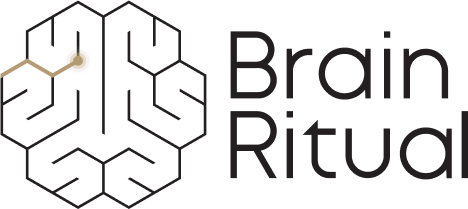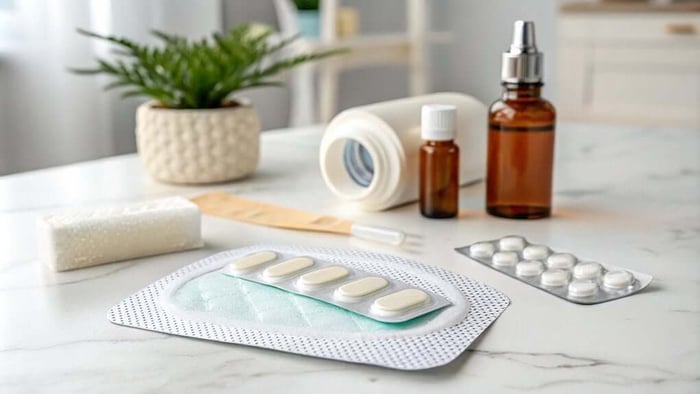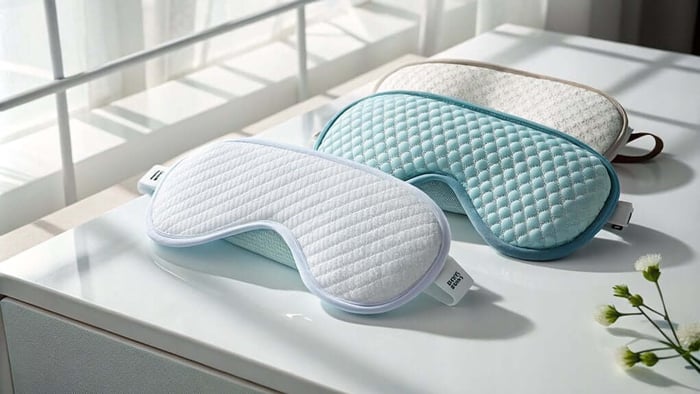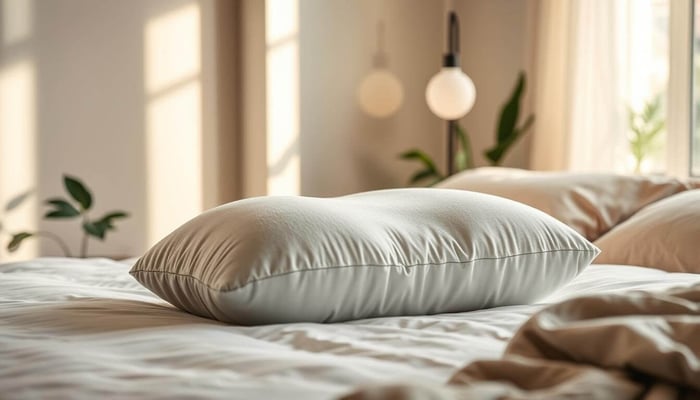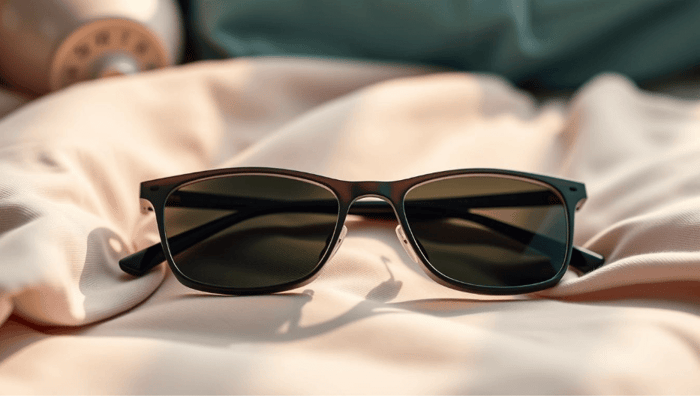At a Glance
|
Migraine patches offer distinct advantages over traditional treatments through two primary mechanisms: cooling patches and prescription medication patches.
You'll find cooling patches provide potential support, with clinical studies showing a 31.8% reduction in pain intensity at the 30-minute mark. This effect likely happens via the activation of cold-sensitive TRPM8 channels, which have a direct analgesic effect.
The pain-relieving effects are most pronounced during the first hour of application, though effectiveness gradually diminishes once the cooling element wears off.

Prescription medication patches using iontophoretic technology provide pain relief comparable to traditional oral medications, with patient satisfaction rates around 75% and sustained delivery over several hours.
Your protocol options include both drug-free cooling solutions that promote vasoconstriction and prescribed transdermal medications that maintain steady drug concentrations.
The integration of these patch technologies with complementary interventions presents comprehensive strategies for migraine management.
Just keep in mind that these patches are not the ultimate all encompassing solution and you will understand why this is the case in the rest of the article.
Understanding Migraine Patches
You'll encounter two primary categories of migraine patches in your journey: commercial cooling patches and prescription medication patches.
Commercial cooling patches employ menthol and aromatherapy ingredients to deliver drug-free relief through cooling sensations for up to 12 hours.
Most cooling patches provide support for significantly shorter periods:
- Standard cooling patches last up to 3 hours.
- Some specialized patches like Biofreeze provide up to 8 hours of support.
- Only specific products like Deep Relief Actiflex claim 12-hour soothing effects.
On the other hand, prescription medication patches utilize something called iontophoretic technology, which delivers migraine medication transdermally through controlled electrical currents over a certain time frame.
Commercial Cooling Patches
Commercial cooling patches represent a non-pharmacological intervention for migraine aid, utilizing a combination of menthol and aromatherapy compounds to deliver therapeutic cooling effects.
The sensory stimulation effects activate thermoreceptors in the skin, promoting localized vasoconstriction and reducing inflammatory responses associated with migraine episodes.
In addition, they activate TRPM8 receptors, cold-sensitive ion channels that have direct analgesic (=pain relieving) properties.
You'll find these patches particularly beneficial due to their wear comfort and cost effectiveness and great tolerability compared to prescription alternatives.
Feature | Clinical Impact |
Duration | Up to 12 hours of cooling support |
Application | Direct contact with forehead/neck |
Safety Profile | Minimal skin irritation risks |
The environmental impact is there but can be minimized when biodegradable materials are used.
When properly applied to clean, dry skin, they provide consistent cooling sensation through a controlled release mechanism.
These patches don't require any special disposal protocols, unlike their prescription counterparts.
While some users may experience mild skin irritation risks, the overall safety profile remains favorable.
The patches' effectiveness typically manifests within 15 minutes of application, making them suitable for acute symptom management.
Furthermore, they are easy to take with you, in contrast to cooling pads that need to be frozen. So they are a good alternative when traveling.
Their non-invasive nature and absence of systemic side effects make them an attractive option for those seeking drug-free migraine support.
Prescription Medication Patches
While cooling patches offer non-pharmacological help, prescription medication patches represent a significant advancement in migraine therapeutics through their innovative iontophoretic delivery system.
You'll find these battery-powered devices utilize controlled electrical delivery to transport medication directly through your skin, bypassing common gastrointestinal complications, which can be an issue during acute migraine attacks, where some patients experience nausea and vomiting
The technology behind these patches focuses on three critical aspects:
- Bioavailability enhancement through precise electrical currents that facilitate medication transport across the dermal barrier
- Absorption optimization via controlled release mechanisms that maintain consistent drug levels over a four-hour period
- Side effect reduction through targeted delivery that minimizes systemic exposure
You'll benefit from the patch's sophisticated delivery system that ensures medication reaches therapeutic levels while avoiding the peaks and troughs associated with oral administration.
The controlled electrical delivery system's precision allows for some improvements in treatment adherence and efficacy.
When you're experiencing nausea during a migraine attack, these patches prove particularly valuable as they circumvent the need for oral medication intake.
Benefits and Effectiveness of Migraine Patches
When you utilize migraine patches, cooling patches provide immediate support that peaks at 30 minutes with a 31.8% reduction in pain intensity.
On the other hand, medication delivery patches like Zecuity, which contains the migraine acute medication sumatriptan, help about half of its users achieve headache help within two hours.
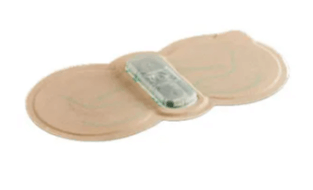
Zecuity is a battery-powered skin patch that delivers sumatriptan through the patient’s skin – it is a single-use medication.
Clinical studies show that medication patches are particularly effective when patients also suffer from nausea.
According to the American Academy of Neurology, migraine patients who have nausea symptoms should not take medications via the mouth (oral route), because of the risk of vomiting.
Cooling patches typically provide aid for 6-8 hours, with some products like Kool 'n' Soothe offering continuous cooling effects during this period.
Your therapeutic response can be optimized through proper timing of application, with both patch types showing superior sustained ease compared to traditional oral medications.
Your reduction in migraine days can be substantially improved when combining patch therapy with other treatments.
Speed of Action
The speed of therapeutic response stands as a crucial differentiator among migraine treatment options.
When you're experiencing a migraine attack, you'll find that cooling patches typically deliver the fastest onset time, providing sensory help within 15 minutes of application.
In comparative effectiveness studies, prescription medication patches demonstrate a different timeline.
You'll generally experience meaningful relief within two hours of application, with the iontophoretic delivery system maintaining consistent medication levels throughout the four-hour treatment duration.
Both are acute migraine interventions, which are distinct to longer term strategies, such as life-style interventions, preventative medications or the medical food Brain Ritual® all of which require daily adherence for optimal results.
These strategies can be considered as better long term migraine support because they focus on causes of migraine, such as brain nutrient deficiencies in the case of Brain Ritual®.
You'll find that combining modalities, such as using a cooling patch with prescribed medication patches, can optimize your duration of relief by addressing both immediate comfort and underlying migraine mechanisms through complementary pathways.
Duration of Support
When you're comparing treatment options, you'll find that migraine patches provide distinct advantages in acute migraine treatment.
The duration of cooling effects from menthol-based patches typically extends up to 12 hours, while prescription medication patches deliver consistent therapeutic levels over a four-hour application period.
Keep in mind, we are talking about prescription medication patches here.
Key differences in support duration include:
- Cooling patches maintain their effectiveness throughout the 12-hour wear time, with consistent vasoconstriction and anti-inflammatory effects
- Medication delivery patches provide steady-state drug concentrations for 4 hours, offering more predictable support compared to oral medications' variable absorption
The time to onset of support varies significantly among options, with cooling patches acting within 15 minutes and medication patches showing peak effectiveness at 2 hours.
Support duration over time demonstrates that patches offer more consistent therapeutic levels compared to oral medications, which often show fluctuating plasma concentrations.
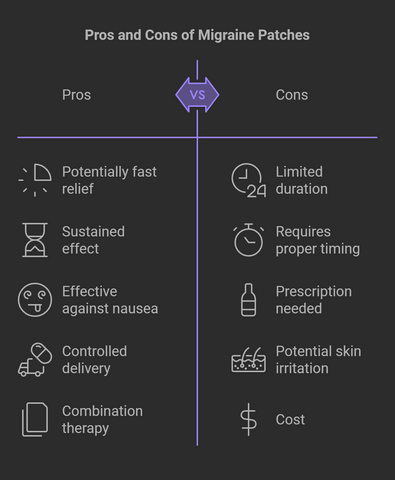
This consistency in medication delivery helps maintain sustained support throughout the treatment period.
Comparisons Between Migraine Patches and Alternatives
There are many options available for managing migraine, ranging from oral medications to more holistic approaches.

Understanding how migraine patches compare with these alternatives can empower patients to make informed decisions.
Here we will cover some of the most relevant ones to migraine patches.
Cold Therapy Options
Cold therapy aka Migraine Mask applications represent distinct approaches between migraine patches and traditional cold therapy solutions, each offering unique mechanisms of action for pain relief.
Both cold patches and ice packs / migraine masks are popular remedies for migraine relief, as they utilize cold therapy to reduce pain and inflammation.
Here's a detailed comparison to help you understand their differences and decide which might be more suitable:
Aspect | Cold Patches | Ice Packs |
Mechanism of Action | Thin adhesive patches infused with cooling gel; absorb heat from skin; may contain menthol | Physical packs filled with ice/gel; directly lower skin temperature; reduce blood flow |
Intensity of Cooling | Gentle and consistent cooling; suitable for cold-sensitive individuals | More intense cooling; better for severe pain but risks cold burns |
Convenience | • Easy to apply and portable • No freezing required • Adheres directly to skin • Can be worn during activities | • Requires freezing/chilling • Needs securing in place • Requires protective barrier • Limited mobility |
Duration of Cooling | • 4-8 hours (brand dependent) • Better for prolonged, low-intensity relief | • 15-30 minutes • Needs refreezing for extended use |
Applications | • Ideal for low-maintenance needs • Suitable for mild to moderate migraines • Good for prevention | • Better for acute, severe migraines • Best for early-stage treatment • Good for blood vessel constriction |
Cost and Reusability | • Disposable, single-use • More expensive long-term | • Reusable • More cost-effective long-term • Higher initial investment |
Comfort and Skin Sensitivity | • Gentle on skin • Less likely to cause irritation • Suitable for sensitive skin | • Can cause discomfort/numbness • Risk of skin damage • Not ideal for prolonged use |
In conclusion, cold patches and ice packs each have distinct advantages: patches offer convenience and gentle relief for daily use, while ice packs provide intense, cost-effective treatment for severe episodes.
Choose cold patches if:
- You prefer convenience, portability, and gentle cooling.
- You have sensitive skin or dislike intense cold sensations.
- You want a low-maintenance solution for mild to moderate migraines.
- Choose ice packs if:
- You need rapid, intense relief from severe migraines.
- You don’t mind the preparation and can limit application time to avoid skin damage.
- You’re looking for a more economical, reusable option.
Using either method depends on personal preference and the severity of the migraine. Some people find that combining both (using ice packs initially and cold patches later) works best.
Medical Food for Migraine Support
Beyond temperature-based interventions, medical food like Brain Ritual® offer a distinctly different therapeutic mechanism compared to migraine patches, but is also an alternative and complementary tool for migraine management.
While patches provide localized support through cooling or medication delivery, Brain Ritual® targets the underlying metabolic aspects of migraine through brain energy regulation and specialized nutrient formulations.
You'll need to follow specific daily dosage guidelines with Brain Ritual®, taking it twice daily for optimal results.
The nutrient formulation benefits include a comprehensive blend of ketone bodies (D-Beta-Hydroxybutyrate), essential vitamins, and minerals that work synergistically to support metabolism enhancement properties.
Unlike patches that offer temporary support, Brain Ritual®'s approach focuses on improved overall brain health through sustained nutritional support.
The product's specialized composition addresses mitochondrial efficiency and cellular energy production - mechanisms that aren't targeted by traditional patch treatments.
By incorporating Coenzyme Q-10, L-Carnitine, and a complete vitamin complex, you're supporting both immediate brain function and long-term neurological health.
This systematic approach to migraine management through metabolic optimization represents a more comprehensive strategy compared to the symptomatic aid provided by patches.
Neuromodulation Methods
Through advanced technological interventions, neuromodulation methods offer a distinct therapeutic approach compared to migraine patches, utilizing targeted electrical or magnetic stimulation to regulate neural pathways involved in migraine pathophysiology.
While patches provide localized support through cooling or medication delivery, nerve stimulation techniques directly modulate pain signals through sophisticated brain modulation therapies.
You'll find several FDA-approved neuromodulation options that demonstrate clinical efficacy:
- Transcranial magnetic stimulation (TMS) devices deliver precise magnetic pulses to your cortex, disrupting the abnormal electrical activity associated with migraine auras
- Vagus nerve stimulation (VNS) systems target the primary nerve connecting your brain to vital organs, reducing migraine frequency through neurotransmitter modulation
- Peripheral nerve blocks utilize targeted electrical impulses to interrupt pain signals along specific neural pathways
When you're considering alternatives to migraine patches, these neuromodulation approaches offer distinct advantages in terms of mechanism of action.
Your healthcare provider might recommend combining these methods with patch therapy for enhanced outcomes, particularly if you've shown partial response to conventional approaches.
The non-invasive nature of most neuromodulation techniques makes them an attractive option for long-term migraine management.
Dietary Supplements
Unlike migraine patches that provide acute support, dietary supplements offer a preventive approach through targeted nutritional interventions that modify underlying migraine pathophysiology.
We have already talked about Brain Ritual® which basically combines various ingredients known for their migraine-preventive properties and it’s not a supplement, it’s medical food, but it's worth mentioning these supplements separately.
You see, coenzyme Q10 benefits extend beyond basic migraine management, as it enhances mitochondrial energy metabolism and reduces the frequency of attacks when taken at 300mg daily.
Clinical studies demonstrate that neuroprotective antioxidants, particularly in combination with CoQ10, can decrease oxidative stress markers associated with migraine onset.
The magnesium deficiency impact on migraine occurrence is well-documented, with supplementation at 400-600mg daily show good results.
There are a lot more supplements and nutrients you'll need, but we want to keep this article focused on the most essential ones.
Key vitamins like riboflavin (B2), vitamin D, zinc, and selenium play crucial roles in brain health and in migraine support.
When you're considering supplement protocols, you'll need consistent daily administration for 2-3 months before evaluating their benefits.
While patches provide immediate intervention, these nutritional approaches address the biochemical foundations of migraine pathophysiology, potentially reducing your reliance on acute treatments.
Practical Application of Migraine Patches
You'll achieve optimal therapeutic benefits by applying migraine patches early in an attack while integrating them with complementary interventions like Brain Ritual®'s medical food protocol or cold therapy solutions.
Your comprehensive strategy should incorporate both patch types with evidence-based alternatives such as neuromodulation techniques or dietary supplements, tracking effectiveness through a detailed migraine diary.
Best Usage Practices
Effective migraine patch application requires adherence to specific protocols for optimal therapeutic outcomes.
When initiating patch placement, you'll need to select an area of clean, dry skin that's free from irritation, typically on the forehead or neck for cooling patches, or the upper arm for medication delivery systems.
The ideal timing for application varies by patch type - cooling patches should be applied at the first indication of symptoms, while prescription patches also work best at earliest onset, but still work when used within one hour of migraine onset.
For maximizing therapeutic benefits, follow these essential steps:
- Monitor patch effectiveness by documenting pain levels, onset of relief, and duration of benefits in a migraine diary
- Establish personalized routines by tracking environmental triggers and timing of applications to optimize your protocol strategy
- Maintain strict adherence to safety precautions, including maximum duration limits (12 hours for cooling patches, 4 hours for medication patches)
You'll need to regularly assess your response and adjust your approach accordingly.
If you're using multiple patches, ensure proper spacing between applications and maintain consistent documentation of outcomes to inform future treatment decisions.
Integration with Other Protocols
You'll find that effective medication management might involve coordinating patch usage with oral medications, ensuring you don't overlap protocols unnecessarily.
For instance, you can use cooling patches during the initial phase while waiting for prescription medications to take effect or enhance their effect.
Consider implementing patch rotation strategies to maximize effectiveness and prevent skin sensitization.
You might want to coordinate your patch usage with adjunct therapies like Brain Ritual®'s medical food solution, which supports brain metabolism through its specialized nutrient blend.
Protocol optimization often involves timing your patch applications with other complementary approaches, such as cold therapy masks or neuromodulation techniques.
It's essential to document your response to various combinations in a migraine diary, allowing you to identify the most effective integration patterns for your specific migraine profile.
Frequently Asked Questions
You might still have some questions about migraine patches and their comparison to other options. So let’s dive into some of these below.
Are migraine patches safe for individuals with sensitive skin or potential allergic reactions?
While migraine patches are generally designed with minimal skin irritation risks, individuals with sensitive skin should perform a patch test before full application.
Consult with a healthcare professional if you have a history of skin rashes or allergic reactions to transdermal treatments.
Can migraine patches help patients with chronic migraine who haven't found help with traditional medications?
Migraine patches offer an innovative alternative for those struggling with chronic migraine management.
Their targeted delivery mechanisms and diverse approaches (cooling and medication-based) can provide new hope for patients who have exhausted conventional options.
How do migraine patches differ from traditional pain management for vascular diseases related to headaches?
Unlike standard options, migraine patches provide localized, targeted help that addresses blood vessel constriction and inflammatory responses.
They offer a more precise intervention compared to systemic oral medications, potentially reducing side effects associated with traditional headache treatments.
Can migraine patches be an effective solution for neck pain associated with severe headaches?
Migraine patches, particularly cooling varieties, can provide targeted aid for neck pain by promoting localized vasoconstriction and reducing inflammatory responses.
Their ability to address both headache pain and associated neck discomfort makes them a versatile treatment option.
Conclusion
Migraine patches deliver effective support through cooling patches (31.8% pain reduction in 30 minutes) and prescription medication patches (50% pain minimization in several hours).
Their non-invasive nature and compatibility with other protocols make them valuable tools for migraine management.
For optimal results, patches should be integrated with complementary processes while following proper application protocols and maintaining your records.
